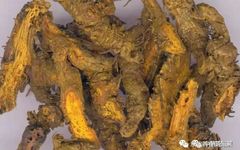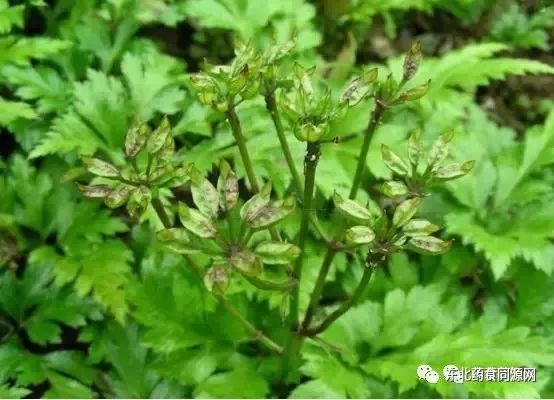
Chinese Medicinal Herb: Huanglian (Coptis)
Source: This product is the dried rhizome of the Ranunculaceae plant Huanglian (Coptis chinensis), Sanjiao Huanglian (Coptis teeta), or Yunlian (Coptis deltoidea). The three types are commonly referred to as “Weilian,” “Yalian,” and “Yunlian.”
Plant Identification: A perennial herb. The rhizome is yellow and often branched. The leaves are all basal, with a leathery texture, and are 3-parted. The central lobe has a petiole, is ovate-rhombic, deeply lobed, with sharp serrated edges, and the lateral lobes are unevenly 2-lobed. There are 1-2 flower stalks; the inflorescence is terminal, with 3-8 flowers. The involucral bracts are usually 3, lanceolate, and deeply lobed; the smaller bracts are round and slightly smaller. The sepals are 5, yellow-green, and narrowly ovate; the petals are linear and lanceolate, with a nectar groove in the center. There are many stamens, with the outer stamens slightly shorter or nearly equal in length to the petals; there are 8-12 carpels, free, with short stalks. The fruit is a capsule with 6-12 seeds, with fine stalks. The flowering period is from February to April, and the fruiting period is from March to June. It is distributed in Sichuan, Guizhou, Hunan, Hubei, and southern Shaanxi, growing in mountainous forests or shady valleys at altitudes of 500-2000 meters, either wild or cultivated.
Characteristics of the Medicinal Material:
Weilian is often clustered, usually curved, resembling a chicken’s claw, with a single rhizome length of 3-6 cm and a diameter of 0.3-0.8 cm. The surface is grayish-yellow or yellow-brown, rough, with irregular nodular protrusions, fibrous roots, and remnants of fibrous roots. Some segments have a smooth surface like a stem, commonly referred to as “crossing the bridge.” The upper part often retains brown scale leaves, and the tip usually has remnants of the stem or petiole. It is hard, with an irregular cross-section; the bark is orange-red or dark brown, and the wood is bright yellow or orange-yellow, arranged radially, with some hollow pith. It has a faint odor and an extremely bitter taste.
Yalian is mostly single-stemmed, slightly cylindrical, slightly curved, 4-8 cm long, and 0.5-1 cm in diameter. The “crossing the bridge” part is longer. The tip has a small remnant of the stem.
Yunlian is curved and hook-shaped, mostly single-stemmed, and smaller in size.
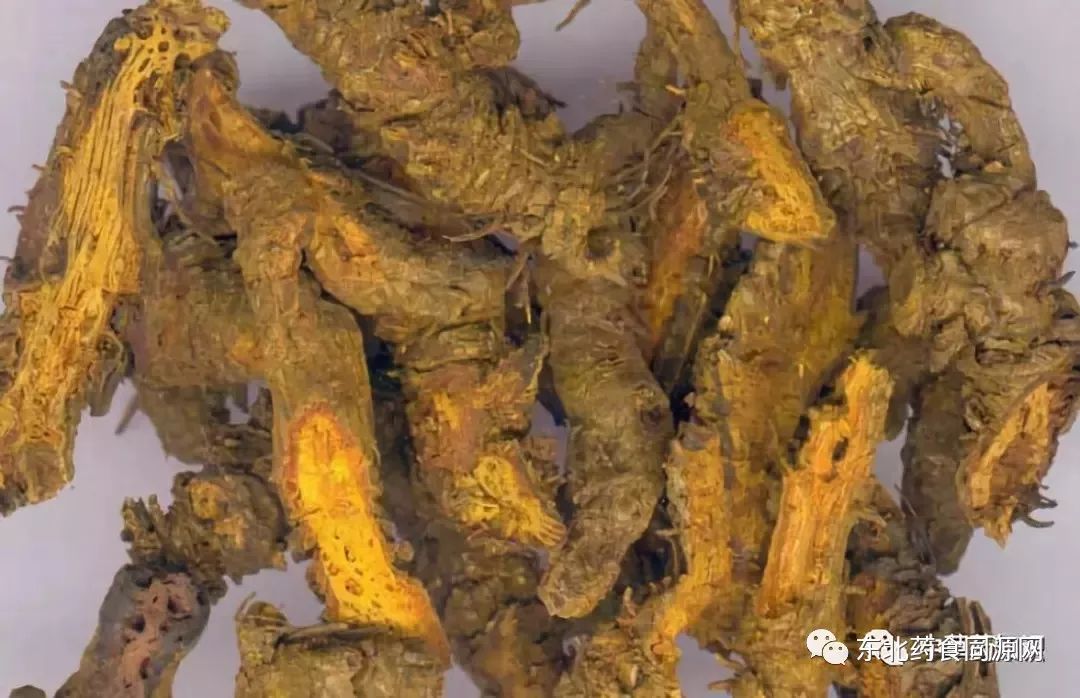
Collection of Medicinal Material: Collected in autumn, removing fibrous roots and soil, dried, and cut into thin slices. The best quality has a fresh yellow cross-section and an extremely bitter taste.
Processing: Huanglian is cleaned of impurities, soaked, then cut into thin slices and dried, or crushed when used. Jiu Huanglian (Wine Huanglian) is made by mixing clean Huanglian slices with yellow wine, stir-fried until dry. Jiang Huanglian (Ginger Huanglian) is made by mixing clean Huanglian slices with ginger juice, stir-fried until dry.
Taste and Meridians: Bitter, cold. It enters the Heart, Spleen, Stomach, Liver, Gallbladder, and Large Intestine meridians.
Functions and Indications: Clears heat and dries dampness, purges fire and detoxifies. Used for damp-heat fullness, vomiting with sour regurgitation, dysentery, jaundice, high fever with delirium, excessive heart fire, irritability and insomnia, palpitations, blood heat with vomiting or nosebleeds, red eyes, toothache, thirst, carbuncles, and sores; externally used for eczema, damp sores, and ear discharge. Jiu Huanglian is good for clearing heat from the upper jiao. Used for red eyes and oral ulcers.
Jiang Huanglian clears the stomach and stops vomiting. Used for cold-heat counterflow, damp-heat obstruction, fullness, and vomiting. Yu Huanglian soothes the liver and stomach and stops vomiting. Used for liver-stomach disharmony, vomiting with sour regurgitation.
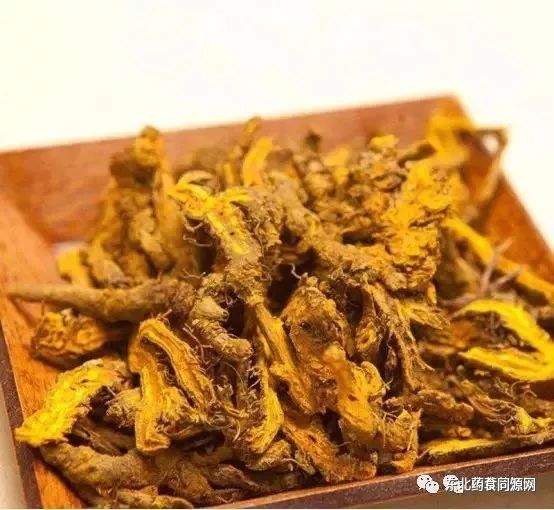
Dosage: 2-5 g. For external use, apply an appropriate amount.
Precautions: This product is extremely bitter and cold; excessive or prolonged use can harm the Spleen and Stomach. It is contraindicated for those with Spleen and Stomach deficiency and cold. Use cautiously in those with Yin deficiency and fluid damage.
Compatibility Applications:
(1) For pain in the stomach due to excessive consumption of hot foods, or persistent vomiting leading to counterflow: Huanglian 18 g, Gan Cao (Licorice, roasted) 3 g. Prepare one dose, boil in a large cup of water until reduced to seven parts, strain and take warm. (From “Heart Medicine Collection”)
(2) For stomach pain unresponsive to other medications, use cold to treat heat: Huanglian 18 g, Fuzi (Aconite, processed, peeled) 3 g. Finely chop. Prepare one dose, add three slices of fresh ginger, one jujube, boil in one and a half cups of water until reduced to one cup, strain and take warm. (From “Medical Transmission”)
(3) For damp-heat syndrome with persistent vomiting, day and night: Huanglian 0.9-1.2 g, Suye (Perilla leaf) 0.6-0.9 g, boil together and take immediately. (From “Damp-Heat Disease”)
(4) For hemorrhoids: Huanglian 60 g, boil into a paste, add equal parts of Mangxiao (Glauber’s salt) and 3 g of Bing Pian (Borneol) to apply. It will reduce hemorrhoids immediately. (From “Danxi’s Key to Treatment”)
(5) For oral ulcers: Huanglian, Puxiao (Alum), and Baifan (White alum) each 15 g, and 30 g of Bohe (Mint leaves). Grind into a coarse powder, place in the gallbladder of a yellow cow in the twelfth lunar month, hang in the wind for two months, then take down. When encountering oral ulcers, grind the medicine finely and apply to stop the heat and saliva, and it will heal. (From “Complete Book of Jingyue” Huanglian Puxiao)
Compatibility Applications:
(1) For purging fire and detoxifying
Huanglian combined with Dahuang (Rhubarb): Purges heat, cools blood, and detoxifies. Used for heat accumulation in the stomach, symptoms include fullness under the heart, a slippery pulse, and a floating pulse at the Guan position. For heat dysentery, symptoms include abdominal pain with diarrhea, or urgency with a feeling of heaviness, or unsatisfactory bowel movements, red tongue with yellow greasy coating, indicating damp-heat fire toxicity obstructing the stomach and intestines; symptoms caused by excessive heat fire toxicity leading to red, painful eyes, oral ulcers, and swollen gums; symptoms of blood recklessly flowing due to heat evil, such as rashes, vomiting blood, and mania. For example, Dahuang Huanglian Xiexin Decoction (from “Treatise on Febrile Diseases”)
Huanglian combined with Lianqiao (Forsythia): Purges fire, detoxifies, disperses masses, and reduces swelling, used for sores, carbuncles, and swelling due to heat toxin accumulation, as well as ear and eye swelling and pain.
Huanglian combined with Rougui (Cinnamon): Harmonizes the Heart and Kidney, purges the south and tonifies the north. Used for insomnia due to disharmony between the Heart and Kidney, palpitations, and anxiety, leading to inability to sleep, such as Jiaotai Pill (from “Han’s Medical Communication”)
Huanglian combined with Ejiao (Donkey-hide gelatin): Nourishes Yin and clears heat. Used for Yin deficiency with excessive fire leading to irritability and insomnia; heat dysentery, and bloody diarrhea. For example, Huanglian Ejiao Decoction (from “Treatise on Febrile Diseases”)
Huanglian combined with Zhushua (Cinnabar): Clears the Heart, purges fire, and calms the spirit. Used for excessive Heart fire leading to irritability and insomnia. For example, Zhushua Anshen Pill (from “Treatise on Internal and External Injuries”)
Huanglian combined with Shengma (Cimicifuga) and Shengdihuang (Rehmannia): Clears the stomach and cools the blood. Used for stomach fire toothache, bleeding gums, and swollen painful gums. For example, Qingwei Powder (from “Secret Collection of the Orchid Room”)
Huanglian combined with Ganjiang (Dried Ginger): Purges heat, removes fullness, and is used for cold-heat combination, spicy opening and bitter descending. Used for stomach fullness and distension due to cold-heat counterflow, noisy acid reflux, loss of appetite; symptoms of heat above and cold below leading to vomiting immediately after eating, abdominal pain with bowel sounds, and persistent diarrhea. For example, Huanglian Decoction (from “Treatise on Febrile Diseases”)
Huanglian combined with Tianhuafen (Trichosanthes root): Clears heat, drains fire, and stops thirst. Used for thirst, with urination that is slippery and frequent like oil. (From “Cui’s Formulas”)

(2) For clearing heat and drying dampness
Huanglian combined with Longdancao (Gentian): Clears heat, dries dampness, purges fire, and detoxifies. Used for damp-heat dysentery, liver channel fire leading to red, swollen, painful eyes, unclear vision, or sudden outbreaks of red eyes.
Huanglian combined with Muxiang (Aucklandia): Clears heat, dries dampness, and promotes Qi movement. Used for bacterial dysentery or enteritis, symptoms include diarrhea with abdominal pain, urgency, and a feeling of heaviness.
Huanglian combined with Banxia (Pinellia): Purges the heart, eliminates fullness, transforms phlegm, and harmonizes the stomach. Used for damp-heat phlegm obstruction, symptoms include fullness and heaviness in the chest and abdomen, excessive sticky phlegm, yellow greasy tongue coating, and slippery pulse; symptoms of cold-heat counterflow leading to fullness and discomfort under the heart, with pain upon palpation. For example, Banxia Xiexin Decoction (from “Treatise on Febrile Diseases”)
Huanglian combined with Peilan (Eupatorium): Clears heat and transforms turbidity. Used for spleen channel damp-heat, symptoms include sweet, greasy mouth, excessive saliva, and bad breath.
Huanglian combined with Hu Huanglian (Coptis): Clears heat, dries dampness, and cools the blood. Used for vomiting blood and blood in the stool.
Huanglian combined with Houpian (Magnolia bark): Clears heat, dries dampness, and promotes Qi movement. Used for cholera, summer heat, and other damp-heat conditions leading to fullness and discomfort in the chest and abdomen, nausea, vomiting, and diarrhea. For example, Lianpu Yin (from “Cholera Treatise”).
Use medication with caution, please follow medical advice!Source: Knowledge of Chinese Herbal Medicine, Contributor: Li Ke. If there are any copyright infringements in the images or text, please contact the editor for removal.

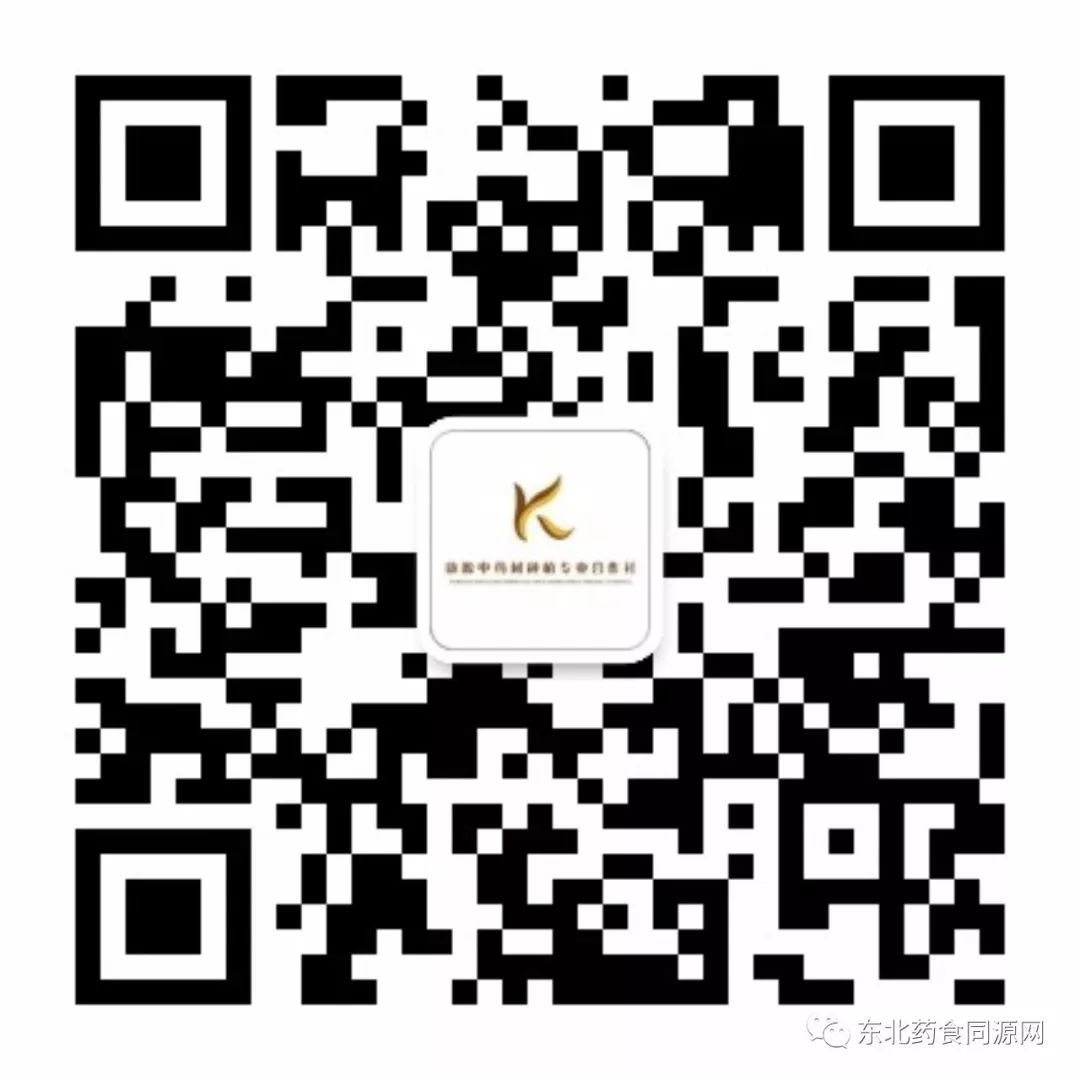

Follow us

